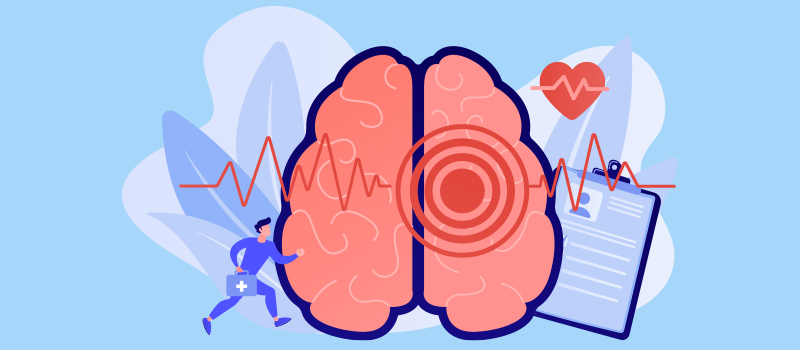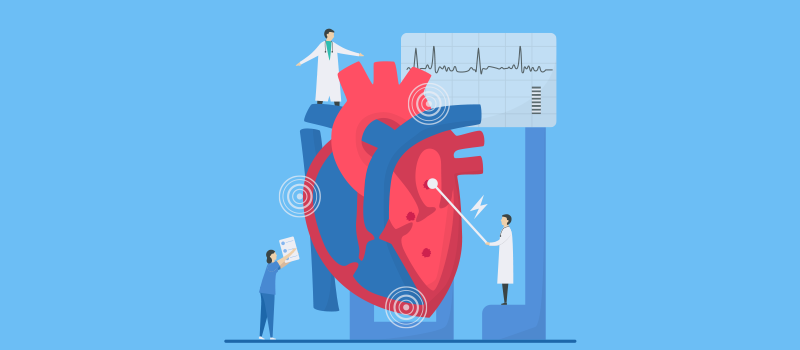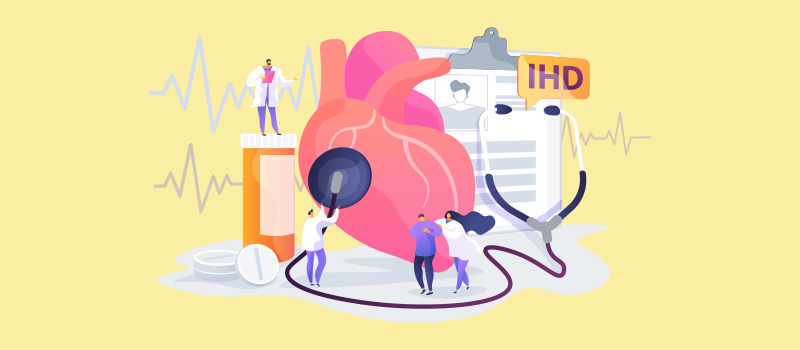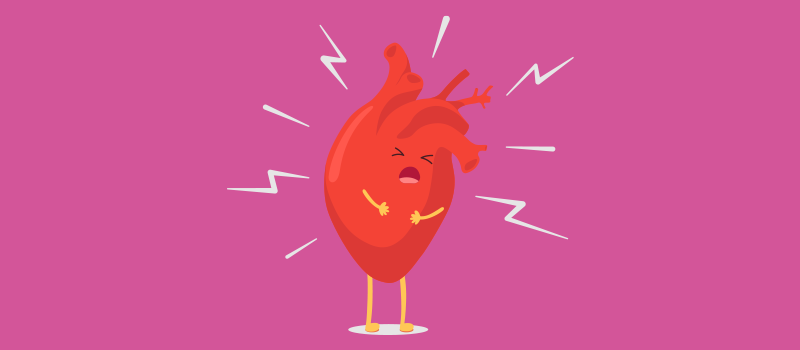What’s the Buzz
The Bee Healthy Blog
How Do Dihydropyridine Calcium Channel Blockers Work?

Cardiovascular disease affects millions of Americans. Heart disease is the leading cause of death in the US in 2020, above cancers and COVID-19. Calcium channel blockers are a group of medications used to treat cardiovascular diseases like high blood pressure, angina, and heart rhythm problems. There are two types of calcium channel blockers—dihydropyridine and non-dihydropyridine.
Please continue reading to learn more about why your doctor might prescribe calcium channel blockers and how these medications work.
How does a calcium channel blocker work?
The body uses channels to transport ions (charged particles) in and out of cells and maintain a balance. These channels are designed to allow certain types of ions to enter and exit. These electrically-charged ions are carried inside of electrolytes, which are minerals such as calcium, potassium; therefore, electrolytes can either have a positive or negative charge, depending on the ions. To keep a balanced state, the body manages the entry and exit of these electrolytes or ions; for instance, when sodium ions get inside the cells, potassium ions will make an exit. This is a prime example of the fact that our body works 24/7 even when we’re sleeping or resting. Using the same concept, calcium ions enter and exit through special channels that act as passages into the cells, and physiological responses occur as the result of these electrical charges across the cell membrane.
Calcium ion channels are only present in certain tissues in the body, including the heart muscle and blood vessels. Calcium channel blockers (also referred to as calcium channel antagonists) are drugs that take advantage of this fact, and that’s how we have two types of calcium channel blockers: Dihydropyridine- and non-dihydropyridine calcium channel blockers. Dihydropyridine (DHP) calcium channel blockers act mainly on blood vessels, with very minimal effects on the heart, whereas non-dihydropyridine (non-DHP) calcium channel blockers exert their effects selectively on the myocardium (the muscle of the heart).
Calcium causes the heart and blood vessels to contract (squeeze) more strongly. By blocking the voltage-gated calcium channels, calcium channel blockers prevent calcium from entering the cells. By reducing the calcium influx into the cells on different body tissues, these two types of calcium channel blockers produce different physiological effects:
- Dihydropyridine calcium channel blockers allow the blood vessel walls to relax, thus, they lower blood pressure
- Non-dihydropyridine calcium channel blockers reduce the contraction of the heart muscle, which also lowers heart rate. This helps to reduce the oxygen requirements of the heart muscle and relieves anginal chest pain. These agents can also be used to treat cardiac arrhythmias (irregular heartbeat).
What is the site of action of dihydropyridine and non-dihydropyridine calcium channel blockers?
Dihydropyridines are calcium channel blockers (CCBs) that target calcium channels in blood vessel walls. They cause the arteries to widen and reduce resistance to blood flow. Taking calcium channel blockers can therefore help to lower blood pressure. However, they don’t have much direct effect on heart function.
Non-dihydropyridine calcium antagonists act selectively on the muscle cells of the heart, their effects on the blood vessels are a lot less significant compared to their counterparts. This mechanism allows non-dihydropyridines to help control irregular heart rhythms, reduce the force of contraction, and lower the heart rate, in turn, reducing the heart’s oxygen demand.
How does non-dihydropyridine affect heart rate?
Dihydropyridines and non-dihydropyridines block calcium ion channels that are found in the blood vessel and cardiac muscle, respectively. Dihydropyridine calcium channel blockers dilate blood vessels, allowing blood to flow easier; therefore, they are the preferred agents to treat high blood pressure.
Even though non-dihydropyridine calcium channel blockers can also be used to treat high blood pressure, this type of calcium channel blockers does not dilate blood vessels as much as their counterparts. As mentioned, non-dihydropyridine calcium channel blockers target the calcium channels residing in the heart muscle.
When non-dihydropyridine calcium channel blockers inhibit these calcium channels, they reduce the influx of calcium into the heart cells. As a result, two significant responses take place.
- First - the heart muscle becomes more relaxed so the heart is able to receive more oxygenated blood - that’s why non-dihydropyridine calcium channel blockers are effective at treating and preventing chest pain.
- Second - The heart will beat slower. This is because the influx of calcium entering the conducting cells in the heart is also inhibited. Side note - In the heart, the conducting cells are responsible for sending signals to the rest of the heart causing a contraction. Blocking the calcium ions from entering the conducting cells makes them more “relaxed,” and heart rate slows down as a result.
What is the difference between dihydropyridine and non-dihydropyridine calcium channel blockers?
Dihydropyridines
Because of their selective action on arterial blood vessels, dihydropyridines are widely used as blood pressure medications. Although dihydropyridines can be used by most people, they are particularly effective in older individuals and people of Afro-Caribbean descent.
In addition to being commonly prescribed to treat high blood pressure, dihydropyridine calcium antagonists are also used to prevent stable angina. In addition, they are used to treat conditions like Prinzmetal (vasospastic) angina, cerebral vasospasm (narrowing of a blood vessel in the brain), and Raynaud’s disease (a condition in which small arteries in the skin narrow in response to cold or stress).
Examples of dihydropyridine CCBs include:
- amlodipine (Norvasc)
- nifedipine (Adalat, Procardia)
- felodipine (Plendil)
- nicardipine (Cardene)
- isradipine (DynaCirc)
- nisoldipine (Sular)
- nimodipine (Nimotop, Nymalize)
Nondihydropyridines
Non-dihydropyridine calcium channel antagonists have a greater effect on the heart and a much lesser effect on the blood vessels. These drugs are used for treatment of health conditions such as chronic stable angina and cardiac arrhythmias. They are also used as blood pressure medications to treat high blood pressure.
Examples of non-dihydropyridine calcium channel blockers include:
What are the side effects of calcium channel blockers?
Possible side effects of dihydropyridine calcium channel blockers include foot and ankle swelling (dose dependent), flushing, headache, dizziness, reflex tachycardia (an increased heart rate with no cause).
The most common side effects of non-dihydropyridine CCBs include slowed heart rate, dose-dependent constipation, and worsening heart function. Non-dihydropyridine calcium channel blockers are not for use in patients with heart failure, heart block, heart disease that causes irregular rhythm. In addition, these medications should not be given to people taking beta-blockers.
Just like any drug, both types of calcium channel blockers can cause rare but major side effects such as allergic reactions and gingival hyperplasia (overgrowth of gums around your teeth). Gingival hyperplasia is rare and it only becomes a concern with long-term use of calcium channel blockers.
References:
- https://www.sciencedirect.com/topics/medicine-and-dentistry/dihydropyridine#
- https://medcraveonline.com/JAPLR/dihydropyridines-as-calcium-channel-blockers-an-overview.html
3.https://www.osmosis.org/answers/dihydropyridines
4. https://pubmed.ncbi.nlm.nih.gov/9049541/
5. https://www.uptodate.com/contents/major-side-effects-and-safety-of-calcium-channel-blockers












SOCIAL